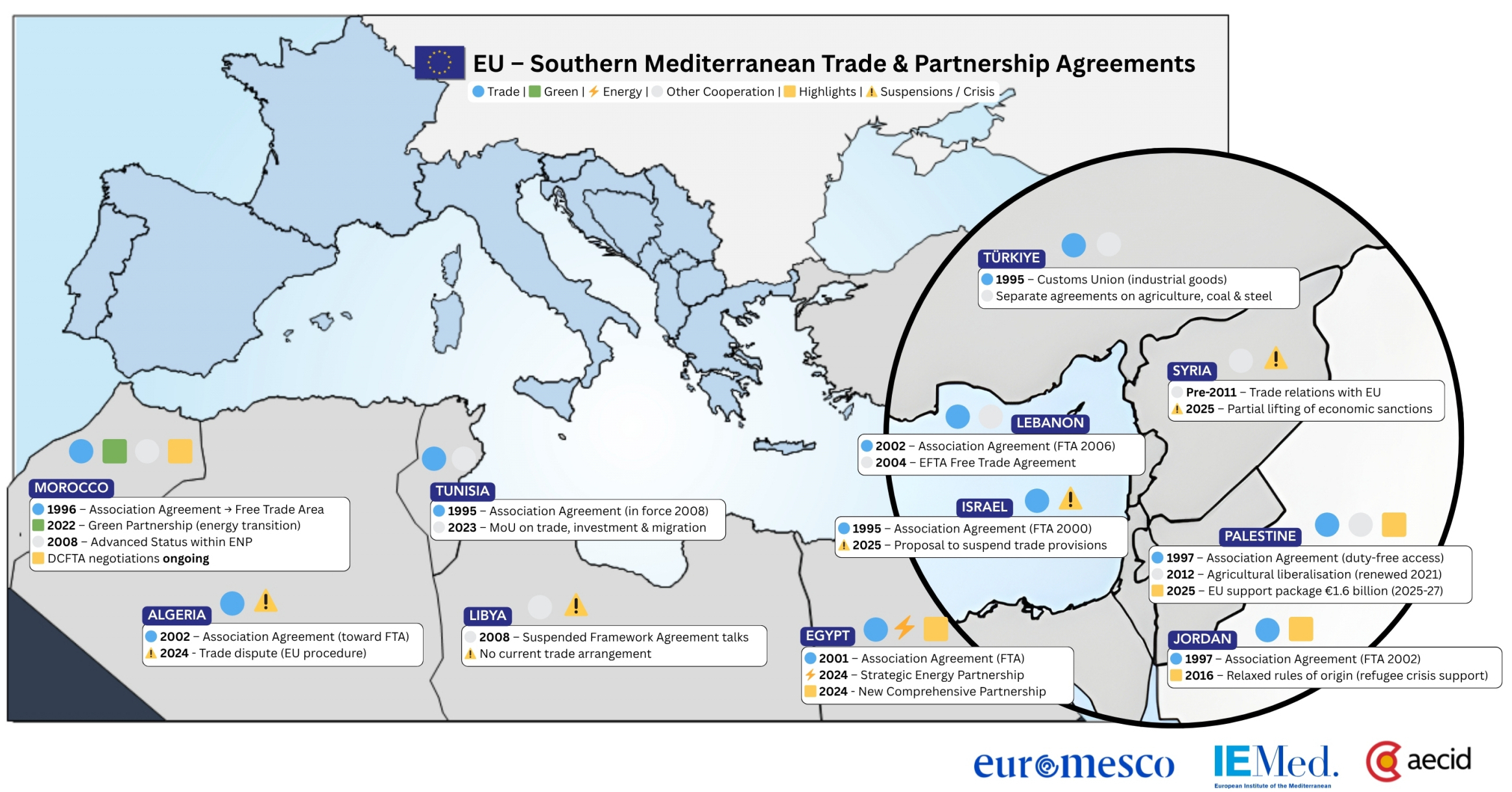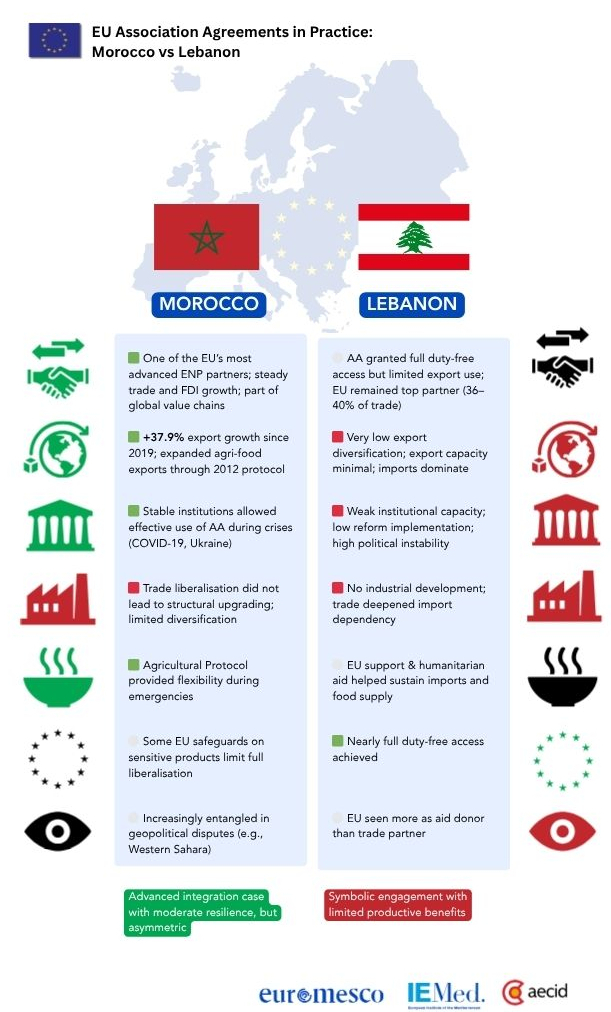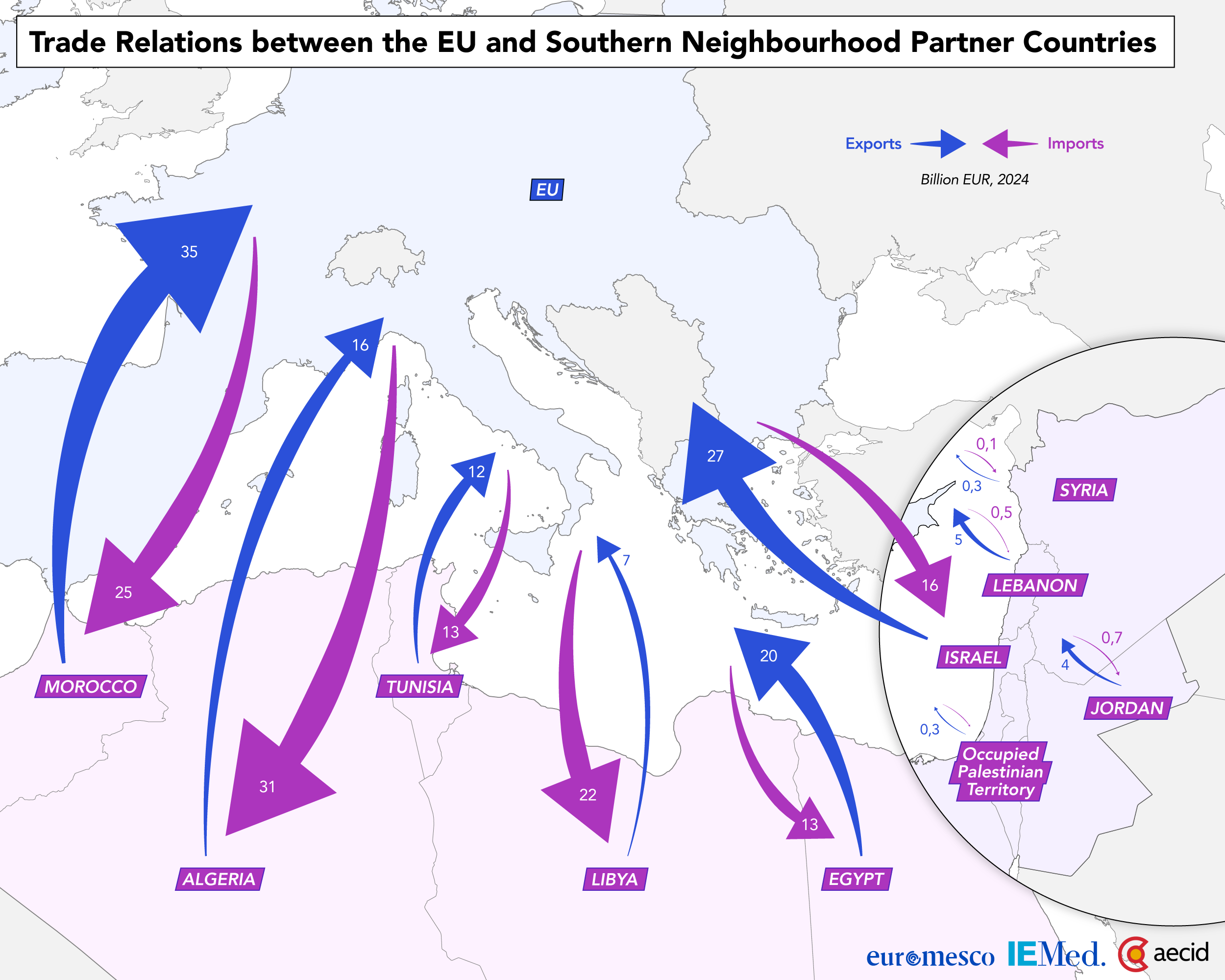
Joint Policy Study / Policy Study
EU trade relations with Southern Mediterranean partners in times of crisis or conflict




Abstract
This Joint Policy Study analyses how EU–SMC trade frameworks can evolve to better withstand crises and deliver shared prosperity. It reveals that most agreements remain shallow, focusing on industrial goods while excluding key sectors such as agriculture and services. The result is a persistent pattern of dependency and low-value exports, leaving many SMCs vulnerable to global shocks.

Three decades after the Barcelona Process, Euro-Mediterranean trade relations remain uneven. While the EU’s Association Agreements with Southern Mediterranean Countries (SMCs) have increased trade volumes, they have done little to foster resilience, diversification, or structural transformation.
Through case studies of Tunisia, Morocco, Jordan, Lebanon, and Libya, the study shows how crises such as COVID-19, the war in Ukraine, and the Gaza conflict have tested the region’s trade resilience. Deeper frameworks, such as Morocco’s, have proven more adaptable, while shallower ones, like Lebanon’s, rely on humanitarian aid rather than sustainable trade.

The Libya case also highlights the limits of the EU’s “trade for peace” model: despite strong energy ties, political fragmentation and foreign interference have prevented trade from fostering real stability or reform.
The study calls for a reframing of EU trade policy around economic resilience ; enabling adaptation, inclusive growth, and crisis response. It urges future agreements to:
-
Move beyond tariff cuts toward regulatory convergence and non-tariff harmonisation.
-
Integrate crisis-response tools and flexibility into trade frameworks.
-
Focus on export diversification, job creation, and green transition.
-
Expand conditionality beyond migration control to include measurable development outcomes.
By linking trade to transformation, innovation, and inclusion, the study argues that Euro-Mediterranean relations can shift from dependency to partnership.



